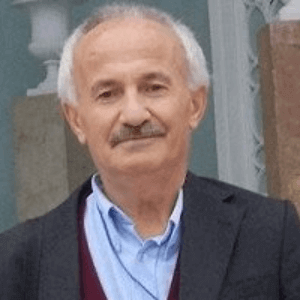Title : Energy relations of thermomechanical processes and crystallographic transformations in shape memory alloys
Abstract:
Shape memory alloys take place in a class of advanced smart materials by exhibiting a peculiar property called shape memory effect. This phenomenon is initiated with thermomechanical processes on cooling and deformation and performed thermally on heating and cooling, with which shape of materials cycles between original and deformed shapes in reversible way. Therefore, this behavior can be called Thermoelasticity. The deformation is plastic deformation with which strain energy is stored in the material and releases on heating by recovering original shape. This phenomenon is based on thermomechanical transformations in crystallographic level, thermal and stress induced martensitic transformations. Thermal induced transformations are exothermic reactions and occur on cooling with the cooperative movement of atoms in <110 > -type directions on {110}-type close packed planes of austenite matrix, along with lattice twinning and ordered parent phase structures turn into twinned martensitic structure. Twinned structures turn into detwinned martensite by means of stress induced martensitic transformation with deformation in the low temperature condition. Shape recovery is performed by endothermic austenitic transformation which occurs on heating and detwinned martensite structures turn into the ordered parent phase structure. Lattice twinning and detwinning reactions play important role in martensitic transformations, and they are driven by internal and external forces by means of inhomogeneous lattice invariant shears. Martensitic and austenitic transformations are solid state reactions, and these reactions do not start at the equilibrium temperature at Gibbs Free Energy Temperature Diagram and a driving force is necessary for the transformations.
These alloys exhibit another property called superelasticity, which is performed with stressing and releasing the material in elasticity limit at a constant temperature in parent phase region, and shape recovery occurs upon releasing, by exhibiting elastic material behavior. Stress-strain curve exhibit non-linear behavior, stressing and releasing paths are different, and hysteresis loop refers to the energy dissipation. Superelasticity is the result of stress-induced martensitic transformation, and parent phase structures turn into the fully detwinned martensite structures with stressing.
Copper based alloys exhibit this property in metastable β-phase region. Lattice invariant shears and lattice twinning are not uniform in these alloys, and the ordered parent phase structures undergo long-period layered structures with martensitic transformation. These structures can be described by different unit cells as 9R or 18R depending on the stacking sequences on the close-packed planes of the ordered lattice.
In the present contribution, x-ray and electron diffraction studies were carried out on copper based CuZnAl and CuAlMn alloys. X-ray diffraction profiles and electron diffraction patterns exhibit super lattice reflections inherited from parent phase due to the diffusionless character of the transformation. X-ray diffractograms taken in a long-time interval show that diffraction angles and intensities of diffraction peaks change with the aging time at room temperature. This result refers to a new transformation in diffusive manner.
Keywords: Shape memory effect, martensitic transformations, thermoelasticity, superelasticity, lattice twinning and detwinning.



